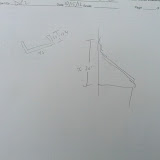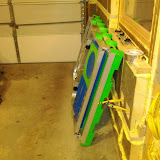 |
| The partially assembled light ring stand. |
 |
| The completed light ring stand with the light ring in place. The stand is assembled with clamps as the LocTite was not yet dry. |
 |
| The stand, broken down and ready for travel. |
 |
| The light ring is now at home in LA, and its cooking with gas. |



































